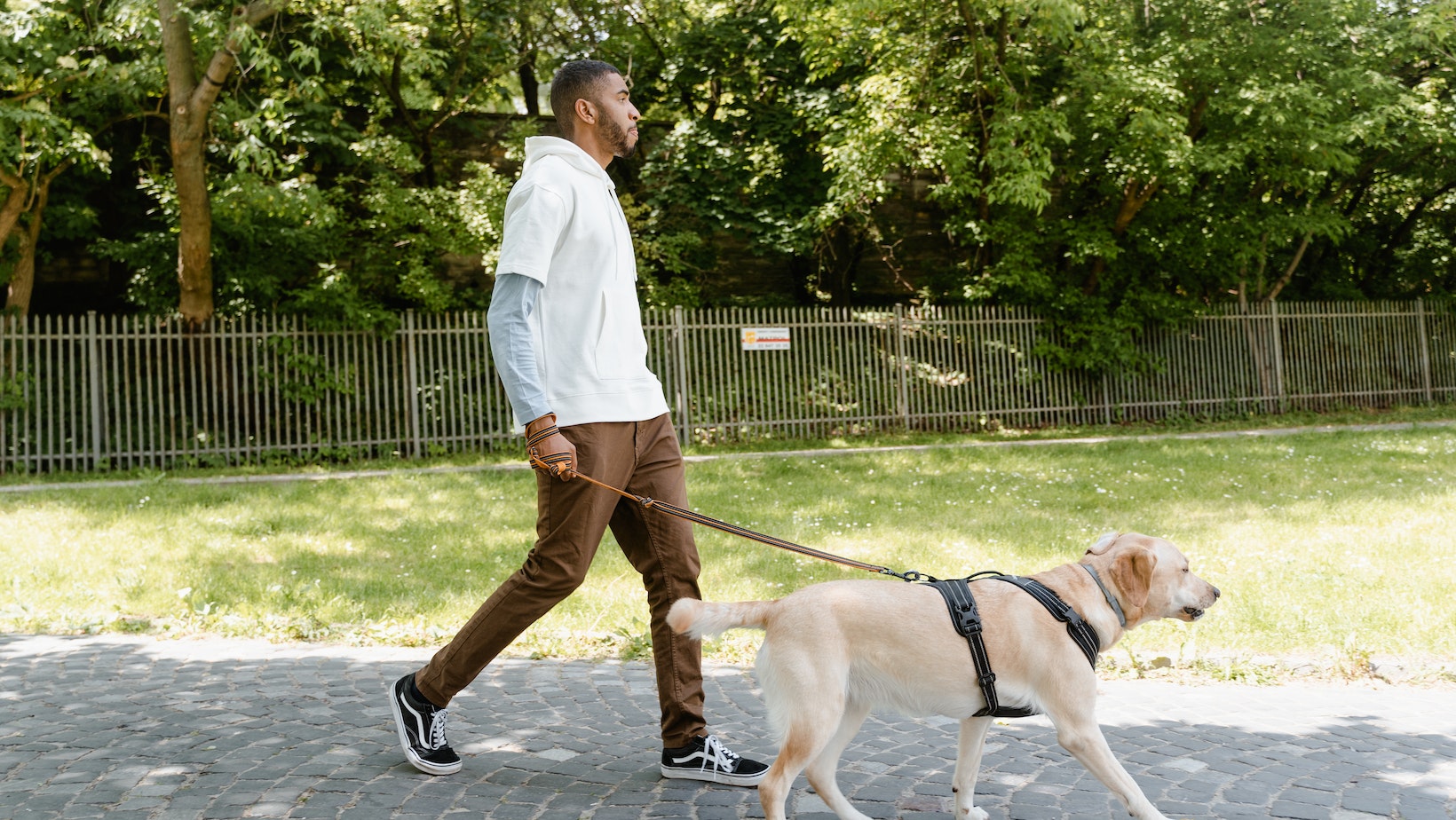Walking a dog on a leash can be a delightful experience, but it can quickly turn into a frustrating tug-of-war if your furry friend constantly pulls. Fortunately, with some patience and consistent training, you can teach your Labrador (or any other breed) to walk calmly by your side without pulling on the leash.
How to Train Dog to Walk on Leash Without Pulling
When it comes to teaching your furry friend how to walk on a leash without pulling, leash training is an essential step in their overall development. Not only does it ensure the safety of both you and your four-legged companion, but it also promotes good behavior and strengthens the bond between you and your pup.
One of the primary benefits of leash training is that it gives you control over your dog’s movements during walks. By teaching them to walk calmly beside you without tugging or lunging, you can enjoy a more relaxed and enjoyable stroll together. This not only prevents potential accidents or injuries but also allows for better socialization with other dogs and people.
Leash training also promotes mental stimulation for your Labrador (or any other breed). It provides them with structured exercise and helps redirect their energy into productive behavior rather than engaging in unwanted pulling. Regular walks help prevent boredom, reduce anxiety, and keep their bodies healthy by providing the necessary physical activity they need.
Common Challenges in Leash Training
While leash training is important, it can sometimes present challenges along the way. One common challenge is dealing with a dog’s natural instinct to pull on the leash. Dogs often pull because they are excited or eager to explore their surroundings. It takes patience and consistency to teach them that pulling won’t get them where they want to go faster.
Another challenge may arise when encountering distractions during walks such as squirrels, other dogs, or loud noises. These distractions can cause dogs to become overly excited or anxious, leading to pulling behaviors. Understanding how to manage these situations through proper training techniques will help overcome these challenges effectively.

Positive Reinforcement Techniques
Fortunately, there are several positive reinforcement techniques that can aid in successful leash training for your Labrador (or any other dog breed). Using rewards such as treats or praise when they walk calmly beside you reinforces the desired behavior.
Start by introducing your dog to the leash and collar in a positive and gradual manner. Allow them to sniff and explore these new items before attaching the leash. Once attached, encourage your dog to walk beside you using gentle guidance and direction. Reward them with treats or verbal praise when they maintain a loose leash and exhibit good behavior.
Consistency is key when it comes to positive reinforcement training. Practice short sessions regularly, gradually increasing the duration and distance of walks as your dog becomes more comfortable walking without pulling. Remember to always use a calm and confident tone while providing clear signals for your dog to understand.
By investing time and effort into leash training, you’ll be rewarded with safe, enjoyable walks with your Labrador (or any other furry friend). With consistent practice, patience, and positive reinforcement techniques, you can help your dog learn how to walk on a leash without pulling while strengthening the bond between you both.
Finding the Right Collar for Your Dog
Collars are equally important when it comes to walking your Labrador. Here are a few options to consider:
- Flat Buckle Collar: This is the most common type of collar that features an adjustable strap with a buckle closure. It’s suitable for everyday walks and provides a place to attach identification tags.
- Martingale Collar: Martingale collars are designed to prevent dogs from slipping out of their collars by tightening slightly when tension is applied. They offer effective control without choking or causing discomfort.
- Harnesses: Harnesses distribute pressure across the chest and shoulders instead of the neck, making them a great alternative for dogs prone to pulling or those with respiratory issues.
Remember, choosing the right leash and collar combination may require some trial and error to find what works best for you and your Labrador. Consider consulting with a professional trainer if you’re unsure about which option would suit your dog’s needs and behavior best.